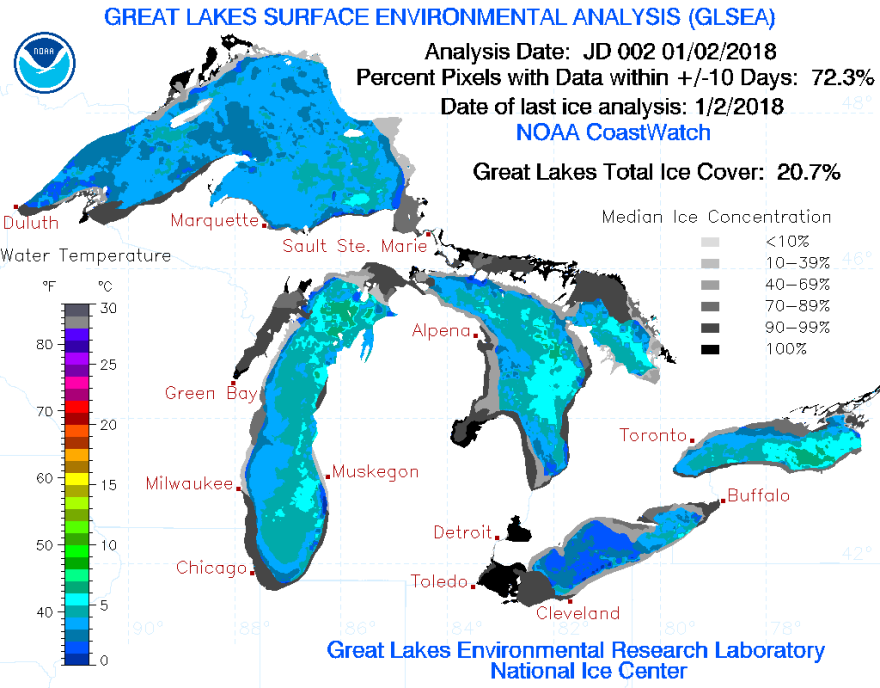Over the past two winters, there wasn’t much ice cover on the Great Lakes. That changed with this month’s deep freeze.
Frigid temperatures have frozen more than 40 percent of Lake Erie’s surface, according to the National Oceanic and Atmospheric Administration or NOAA. Scientists there predict ice cover could jump to almost 90 percent by Sunday.
This time last year, ice barely covered 2 percent of the lake.
The ice and cold temperatures canceled a local group’s polar bear plunge at Edgewater Beach, and prevented a ship from entering Cleveland Harbor without the Coast Guard’s assistance.
With about two weeks left in the shipping season, the U.S. Coast Guard is working to make sure the Soo Locks, which connect Lake Superior to the lower Great Lakes, are clear before they shut down on Jan. 15.
The St. Lawrence Seaway typically closes Dec. 31, but that closing has been delayed -- by ice.
“The vessel Federal Biscay was held up in the Snell Lock specifically, because the lock itself had frozen due to cold temperatures,” said Coast Guard Lt. jg. Grade Kyle Maxey. “What that’s done is had a couple backups in vessels transiting out of the Seaway.”
The Seaway won’t close for the season until five ships including the Federal Biscay clear out. After Jan. 15, Great Lakes shipping will be over until March, when the Soo Locks and the Seaway open for a new season.
The Lake Carriers Association, an organization of companies that operate ships on the Great Lakes, says that while the Coast Guard is doing a great job with the ice, the region still needs another icebreaker to lighten the load for the cutters currently in service.
The good news, according to the association, is that cargo was up this shipping season.
According to NOAA, ice cover typically peaks in mid-February. The early ice on Lake Erie could affect wildlife and algae as the year continues, says LimnoTech scientist Ed Verhamme.
“It’ll be interesting to track this particular year in icing so early and how long is this going to last and potentially affecting spring plankton blooms and going to the blooms this summer,” said Verhamme.
With parts of the lake already frozen over, ice fishing has already started. Lt. jg. Kyle Maxey says safety is key when ice fishing – and advises folks to remember the acronym ICE – Information, Clothing, and Equipment.

